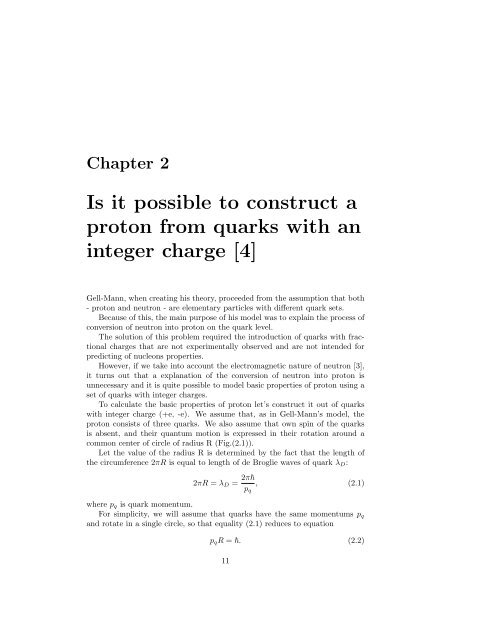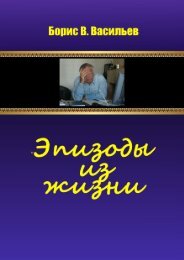VbvNeuE-001
Boris V. Vasiliev About Quantum-Mechanical Nature of Nuclear Forces and Electromagnetic Nature of Neutrinos
Boris V. Vasiliev
About Quantum-Mechanical Nature of Nuclear Forces
and Electromagnetic Nature of Neutrinos
Create successful ePaper yourself
Turn your PDF publications into a flip-book with our unique Google optimized e-Paper software.
Chapter 2<br />
Is it possible to construct a<br />
proton from quarks with an<br />
integer charge [4]<br />
Gell-Mann, when creating his theory, proceeded from the assumption that both<br />
- proton and neutron - are elementary particles with different quark sets.<br />
Because of this, the main purpose of his model was to explain the process of<br />
conversion of neutron into proton on the quark level.<br />
The solution of this problem required the introduction of quarks with fractional<br />
charges that are not experimentally observed and are not intended for<br />
predicting of nucleons properties.<br />
However, if we take into account the electromagnetic nature of neutron [3],<br />
it turns out that a explanation of the conversion of neutron into proton is<br />
unnecessary and it is quite possible to model basic properties of proton using a<br />
set of quarks with integer charges.<br />
To calculate the basic properties of proton let’s construct it out of quarks<br />
with integer charge (+e, -e). We assume that, as in Gell-Mann’s model, the<br />
proton consists of three quarks. We also assume that own spin of the quarks<br />
is absent, and their quantum motion is expressed in their rotation around a<br />
common center of circle of radius R (Fig.(2.1)).<br />
Let the value of the radius R is determined by the fact that the length of<br />
the circumference 2πR is equal to length of de Broglie waves of quark λ D :<br />
2πR = λ D = 2π<br />
p q<br />
, (2.1)<br />
where p q is quark momentum.<br />
For simplicity, we will assume that quarks have the same momentums p q<br />
and rotate in a single circle, so that equality (2.1) reduces to equation<br />
p q R = . (2.2)<br />
11












